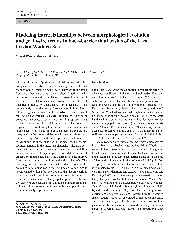摘要
In terms of grain size, surficial sediment distribution patterns in back-barrier tidal basins (e.g., the East Frisian Wadden Sea, Germany) often show a landward fining trend from the sea boundary to the mainland shore. In addition to the cross-shore patterns, there are lateral grain-size trends toward the watersheds of the basins and toward the watersheds of tidal flats bordered by tidal channels on either side. In the present study, interrelationships between morphological evolution and grain-size trends in the back-barrier tidal basins of the East Frisian Wadden Sea were simulated for a period of 60 years by a process-based forward modeling approach using the Delft3D system. The model outputs show that grain size displays a shoreward fining trend within the basin area, which is consistent with in situ observations; such a trend can be interpreted by the shoreward decrease in the cross-shore maximum velocity. Moreover, the model predicts lateral grain-size trends similar to those observed in the tidal basins: coarser sediment remains in the inlets and channels, while finer sediment settles at the tidal watersheds and on the tidal flats between channels. The spatial patterns of tidal flat sediment grain size within the tidal basins are thus related to the distance from the sea boundary and from the tidal channels. The modeling exercise also indicates that the development of the grain-size pattern observed in the East Frisian Wadden Sea is accomplished within a few decades, and that the time periods required to reach equilibrium are much shorter for grain size than for bed elevation. Evidently, spatial grain-size information can be used to assess sediment transport and morphological adaptation processes as, for example, attempted in sediment trend analysis procedures.
- 出版日期2014-2
- 单位南京大学
